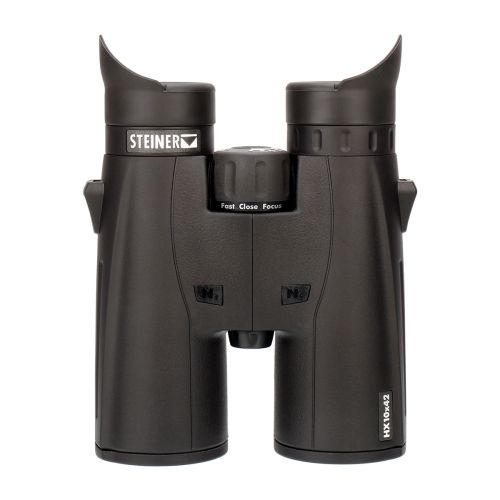

Steiner HX 10x42 2015 Binoculars offer reliable performance for outdoor enthusiasts. These binoculars feature advanced lens coatings that enhance clarity and light transmission, ensuring you capture every detail in various lighting conditions. Their lightweight design makes them easy to carry during extended excursions, while the ergonomic body provides a comfortable grip for all-day use. With a fast-close-focus system, adjustments can be made swiftly, allowing you to focus on fleeting wildlife moments without missing a beat.
The wide field of view ensures that tracking subjects is effortless, whether you're birdwatching or enjoying nature's scenery. Constructed to withstand the elements, these binoculars are waterproof and feature a water-repellent surface that keeps dirt and fingerprints away. The soft rubber eyecups provide comfort and can be adjusted for eyeglass wearers, making the Steiner HX 10x42 an excellent choice for both casual observers and serious adventurers.
Key Features:
- LIGHTWEIGHT DESIGN for easy portability during long hikes.
- ENHANCED CLARITY with lens coatings for bright, sharp images.
- FAST-CLOSE-FOCUS system for quick adjustments on the go.
- WIDE FIELD OF VIEW to spot wildlife at greater distances.
- ERGONOMIC BODY for comfortable grip and handling.
- WATERPROOF capability up to 10ft, ideal for all-weather use.
- FOLDABLE EYECUPS for versatility and comfort with glasses.
- STURDY CONSTRUCTION ensuring durability for outdoor adventures.
Technical Specifications Table
| Specification | Details |
|---|---|
| Magnification | 10X |
| Objective Lens Size | 42mm |
| Close Focus Distance | 6 ft |
| Weight | 28 oz |
| Field of View @ 1000 Yds | 326 ft |
| Length | 5.8" |
| Exit Pupil | 4.2mm |
| Twilight Factor | 20.5 |
| Exterior Finish | Matte Black |
| Weather Resistance | Waterproof up to 10ft |
| Submerged Width | 4.9" |
What’s in the Box?
- Steiner HX 10x42 Binoculars
- Lens covers
- Padded carrying case
- Neck strap
Customer Reviews
“These binoculars are perfect for my birdwatching hobby. The clarity is outstanding!”
“Lightweight yet durable! I took them hiking, and they truly made the experience better.”
“Fantastic field of view, I can see everything so clearly.”
FAQ
What is the performance of Steiner HX 10x42 in low light?
The Steiner HX 10x42 Binoculars excel in low light conditions due to their high-quality lens coatings that maximize light transmission, allowing for clear images even at dawn or dusk.
How do I maintain my binoculars?
Regularly clean the lenses with a soft microfiber cloth, and store them in a dry, cool place to prevent moisture damage. For extensive cleaning, use lens cleaning solutions designed for optics.
How do these compare to other 10x42 binoculars on the market?
The Steiner HX 10x42 stands out due to its ergonomic design and superior lens coatings, providing an excellent balance of weight, clarity, and durability compared to other models.
Similar Models
Looking for even more optical options? Discover our extensive Steiner collection, including models like the Steiner SkyHawk 8x42 for a wider field of view and the Steiner Safari UltraSharp for enhanced portability. Explore our full collection for exceptional optics tailored to your adventures.
You May Also Like
Here’s some of our most similar products people are buying. Click to discover trending style.








